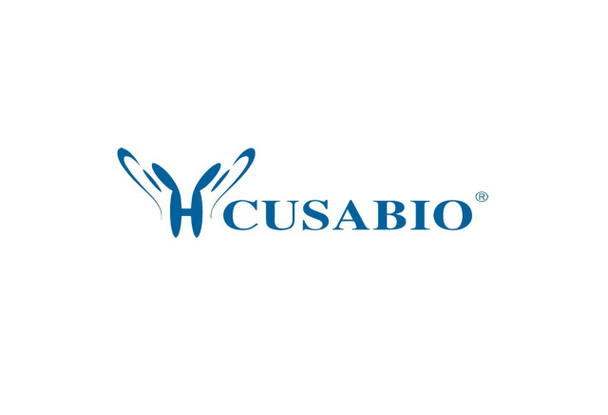Cusabio Mouse Recombinants
Recombinant Mouse Tumor necrosis factor ligand superfamily member 11 (Tnfsf11), partial | CSB-EP023986MO
- SKU:
- CSB-EP023986MO
- Availability:
- 3 - 7 Working Days
Description
Recombinant Mouse Tumor necrosis factor ligand superfamily member 11 (Tnfsf11), partial | CSB-EP023986MO | Cusabio
Alternative Name(s): Osteoclast differentiation factor Short name:ODF Osteoprotegerin ligand Short name:OPGL Receptor activator of nuclear factor kappa-B ligand Short name:RANKL TNF-related activation-induced cytokine Short name:TRANCE CD_antigen: CD254
Gene Names: Tnfsf11
Research Areas: Others
Organism: Mus musculus (Mouse)
AA Sequence: YFRAQMDPNRISEDSTHCFYRILRLHENADLQDSTLESEDTLPDSCRRMKQAFQGAVQKELQHIVGPQRFSGAPAMMEGSWLDVAQRGKPEAQPFAHLTINAASIPSGSHKVTLSSWYHDRGWAKISNMTLSNGKLRVNQDGFYYLYANICFRHHETSGSVPTDYLQLMVYVVKTSIKIPSSHNLMKGGSTKNWSGNSEFHFYSINVGGFFKLRAGEEISIQVSNPSLLDPDQDATYFGAFKVQDID
Source: E.coli
Tag Info: N-terminal 6xHis-SUMO-tagged
Expression Region: 70-316aa
Sequence Info: Extracellular Domain
MW: 43.9 kDa
Purity: Greater than 90% as determined by SDS-PAGE.
Relevance: Cytokine that binds to TNFRSF11B/OPG and to TNFRSF11A/RANK. Osteoclast differentiation and activation factor. Augments the ability of dendritic cells to stimulate naive T-cell proliferation. May be an important regulator of interactions between T-cells and dendritic cells and may play a role in the regulation of the T-cell-dependent immune response. May also play an important role in enhanced bone-resorption in humoral hypercalcemia of malignancy.
Reference: "TRANCE is a novel ligand of the tumor necrosis factor receptor family that activates c-Jun N-terminal kinase in T cells."Wong B.R., Rho J., Arron J., Robinson E., Orlinick J., Chao M., Kalachikov S., Cayani E., Bartlett F.S. III, Frankel W.N., Lee S.Y., Choi Y.J. Biol. Chem. 272:25190-25194(1997)
Storage: The shelf life is related to many factors, storage state, buffer ingredients, storage temperature and the stability of the protein itself. Generally, the shelf life of liquid form is 6 months at -20?/-80?. The shelf life of lyophilized form is 12 months at -20?/-80?.
Notes: Repeated freezing and thawing is not recommended. Store working aliquots at 4? for up to one week.
Function: Cytokine that binds to TNFRSF11B/OPG and to TNFRSF11A/RANK. Osteoclast differentiation and activation factor. Augments the ability of dendritic cells to stimulate naive T-cell proliferation. May be an important regulator of interactions between T-cells and dendritic cells and may play a role in the regulation of the T-cell-dependent immune response. May also play an important role in enhanced bone-resorption in humoral hypercalcemia of malignancy (By similarity). Induces osteoclastogenesis by activating multiple signaling pathways in osteoclast precursor cells, chief among which is induction of long lasting oscillations in the intracellular concentration of Ca (2+) resulting in the activation of NFATC1, which translocates to the nucleus and induces osteoclast-specific gene transcription to allow differentiation of osteoclasts
Involvement in disease: Deficiency in Tnfsf11 results in failure to form lobulo-alveolar mammary structures during pregnancy, resulting in death of newborns. Trance-deficient mice show severe osteopetrosis, with no osteoclasts, marrow spaces, or tooth eruption, and exhibit profound growth retardation at several skeletal sites, including the limbs, skull, and vertebrae and have marked chondrodysplasia, with thick, irregular growth plates and a relative increase in hypertrophic chondrocytes.
Subcellular Location: Isoform 1: Cell membrane, Single-pass type II membrane protein, SUBCELLULAR LOCATION: Isoform 2: Cell membrane, Single-pass type II membrane protein, SUBCELLULAR LOCATION: Isoform 3: Cytoplasm, SUBCELLULAR LOCATION: Tumor necrosis factor ligand superfamily member 11, soluble form: Secreted
Protein Families: Tumor necrosis factor family
Tissue Specificity: Highly expressed in thymus and lymph nodes, but not in non-lymphoid tissues and is abundantly expressed in T-cells but not in B-cells. A high level expression is also seen in the trabecular bone and lung.
Paythway:
Form: Liquid or Lyophilized powder
Buffer: If the delivery form is liquid, the default storage buffer is Tris/PBS-based buffer, 5%-50% glycerol. If the delivery form is lyophilized powder, the buffer before lyophilization is Tris/PBS-based buffer, 6% Trehalose, pH 8.0.
Reconstitution: We recommend that this vial be briefly centrifuged prior to opening to bring the contents to the bottom. Please reconstitute protein in deionized sterile water to a concentration of 0.1-1.0 mg/mL.We recommend to add 5-50% of glycerol (final concentration) and aliquot for long-term storage at -20?/-80?. Our default final concentration of glycerol is 50%. Customers could use it as reference.
Uniprot ID: O35235
HGNC Database Link: N/A
UniGene Database Link: UniGene
KEGG Database Link: KEGG
STRING Database Link: STRING
OMIM Database Link: N/A









